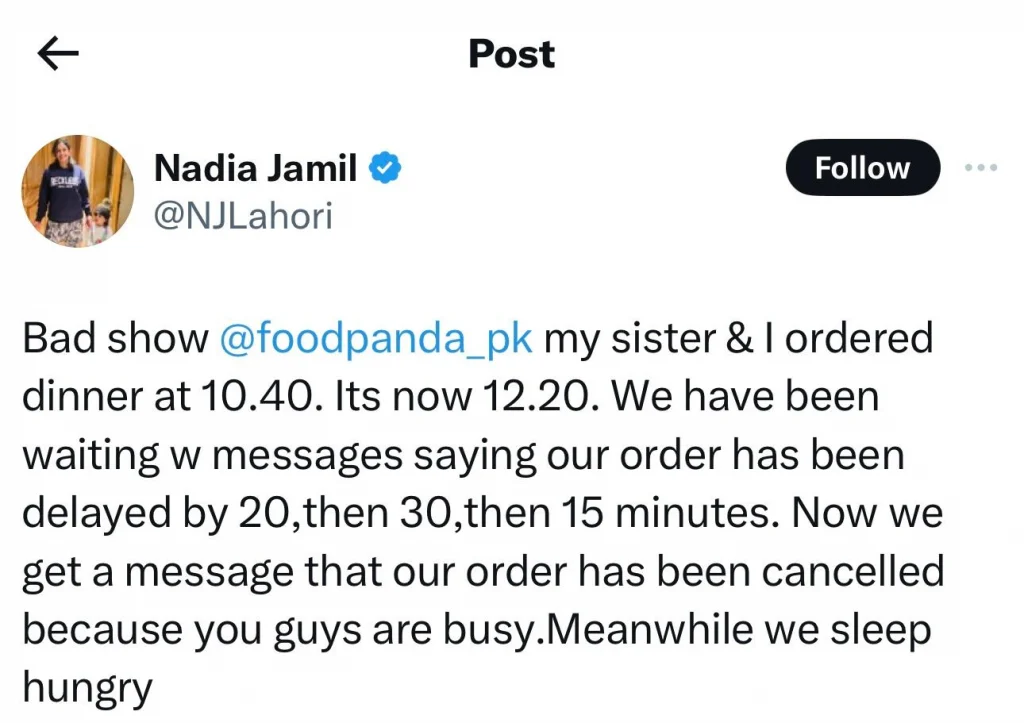- Food delivery struggles in Europe amid competition.
- Chinese delivery apps dominate with superior service.
The convenience of food delivery has revolutionised how we enjoy meals, yet my experiences with Foodpanda have left much to be desired, especially when compared to the seamless services available in China. Here’s a deep dive into the things Foodpanda gets really wrong.
1. Unreliable delivery times
One of the most glaring issues with Foodpanda is its inconsistency in delivery times. On numerous occasions, my orders have arrived significantly late, sometimes by over an hour. This not only spoils the meal but also affects the trust in the service. In contrast, Chinese delivery giants like Meituan and Ele.me consistently deliver within the promised time, often within 30 minutes. For rare possibilities it may delay to 1 hour due to severe weather or traffic conditions.
2. Higher costs and additional fees
Foodpanda’s prices are notably higher due to various additional fees. A typical delivery fee, service charge, and sometimes even a small order fee, make the final bill much heftier than anticipated. For example, an order costing ¥60 ($9) can easily balloon to ¥100($14) with all the added charges. Conversely, Chinese platforms often provide multiple discounts, coupons, and free delivery for orders above a minimal amount, making the service more affordable and appealing.
3. Limited restaurant options
Despite claiming to partner with numerous restaurants, Foodpanda’s selection often feels limited and repetitive. In smaller cities, the options shrink even further, making it difficult to find variety. Meanwhile, China’s delivery apps offer an extensive range of choices, from local street food to high-end restaurants, catering to diverse tastes and preferences.
4. Customer service woes
Customer service is another significant pain point. Foodpanda’s support can be slow and unhelpful, often providing generic responses that fail to address specific issues. On the other hand, Chinese services typically offer real-time chat support with swift resolutions, ensuring customer satisfaction.
Also read: Chinese EV invasion: Europe’s automotive landscape shifts
Also read: Chinese tech giants announce reductions for LLMs
Food delivery apps have revolutionised the way we enjoy meals at home, offering an incredible variety of cuisines delivered straight to your door. It’s perfect for those busy days when you still want to enjoy high-quality food without the hassle of cooking.
Gordon Ramsay, a British chef and television personality
The state of food delivery
Industry background:
Food delivery services have grown exponentially worldwide, with varying levels of success. In China, the market is dominated by Meituan and Ele.me, which have set high standards for speed, efficiency, and customer satisfaction.
Other delivery apps:
- Uber Eats: Available globally, Uber Eats offers reliable service but can also suffer from high fees and occasional delivery delays.
- Deliveroo: Popular in Europe, Deliveroo provides a broad range of restaurant options but is often criticised for its high delivery charges and service fees.
- Grubhub: Prominent in the US, Grubhub has a vast network of restaurants but has faced backlash for inconsistent delivery times and high costs.
The efficiency and reliability of Chinese delivery services have set a benchmark that other counterparts struggle to meet. This has influenced customer expectations globally, highlighting the gaps in services like Foodpanda. A report by Reuters in 2023 highlighted how Meituan’s delivery fleet utilises advanced algorithms to optimise routes, ensuring quicker delivery times even in congested urban areas. In contrast, Foodpanda’s logistical inefficiencies remain a significant hurdle.
Pop quiz
Which food delivery app is the most popular one in Europe?
A. Uber Eats
B. Foodpanda
C. Deliveroo
D. None of the above
The correct answer is at the bottom of the article.

My personal take
My dissatisfaction with Foodpanda boils down to its inability to meet the high standards set by its Chinese counterparts. Last year I start my MA programme at Hong Kong, and one of the biggest problem I encounter is the diet habit difference. I possess a real Chinese stomach and can’t stand two day without any spicy food. Then I start to cook food by myself at my own willing and my own flavor, making the kitchen full of spicy choking smog. Once I cook, my roommate all know it’s me. Once there’s chili in the sink, my roommate can know who didn’t clean it. But sometimes I get lazy and want to order a takeout, then I downloaded some food delivery apps.
One day in April, I was with my friend at the Repulse Bay in Hong Kong. After several hours we all feel very hungry and we ordered a takeout from the closest McDonald’s. We waited from day to night. At last, we got our stale chips when we are almost starving, and it cost us ¥142($20) for the food in the following picture, even with a discount already. It was a bad experience. Actually, when I was in Hong Kong, I use Keeta most frequently, which was just rolled out by Meituan, a platform in the mainland China. Keeta is a food delivery service in Hong Kong known for providing a diverse range of dining options, including local favourites and international cuisine. It operates similarly to other food delivery platforms, offering users the convenience of ordering meals from various restaurants via a user-friendly app. Keeta aims to distinguish itself with efficient delivery times and competitive pricing. While it may not be as widely recognised as giants like Foodpanda or Deliveroo, Keeta has carved out a niche in Hong Kong’s bustling food delivery market by focusing on customer satisfaction and reliability. What matters most is that , as a student in Hong Kong, choosing Keeta for food delivery offers convenience, affordability, and a variety of options to fit a busy schedule. Keeta’s efficient service and frequent discounts make it an ideal choice for budget-conscious students needing quick, delicious meals.

Overall analysis
Having experienced both Hong Kong’s food delivery services and those in other regions, it’s clear that Hong Kong’s platforms need to step up their game. The frequent delays, high costs, limited choices, and poor customer service can make the experience frustrating.
In contrast, Chinese mainland’s platforms like Meituan and Ele.me have set high standards with their fast, reliable, and affordable services. The advanced technology they employ for route optimisation and real-time tracking, coupled with excellent customer service, makes them superior.
In the United States, platforms like Grubhub and DoorDash offer a good variety and generally reliable service, but they share similar issues with high fees and occasional delays. Europe’s Deliveroo provides premium restaurant options but at a higher cost and with inconsistent delivery times.
Hong Kong’s food delivery market is competitive, and there is great potential for improvement. If platforms like Foodpanda and Deliveroo can address these issues, they could offer a much more satisfying and reliable service. As a user, I hope to see these improvements implemented, so that enjoying a meal at home becomes a hassle-free and enjoyable experience.
Ultimately, the goal for any food delivery service should be to combine efficiency, affordability, and excellent customer service. Only then can they truly meet the needs and expectations of their users.
While each platform has its unique strengths, issues such as high fees and inconsistent delivery times are common. The competition in food delivery market pushes each service to improve continuously, yet customer satisfaction can still vary widely depending on the specific platform and area.
The frequent delays, high costs, limited choices, and poor customer service make for a frustrating experience. In a world where convenience is paramount, Foodpanda has a long way to go to catch up with the efficiency and customer-centric approach of Chinese food delivery services.
So, while Foodpanda might suffice in a pinch, it’s hard not to long for the days of living in the mainland China, where a hot meal was just a swift, affordable click away.
The correct answer is C. Deliveroo.
